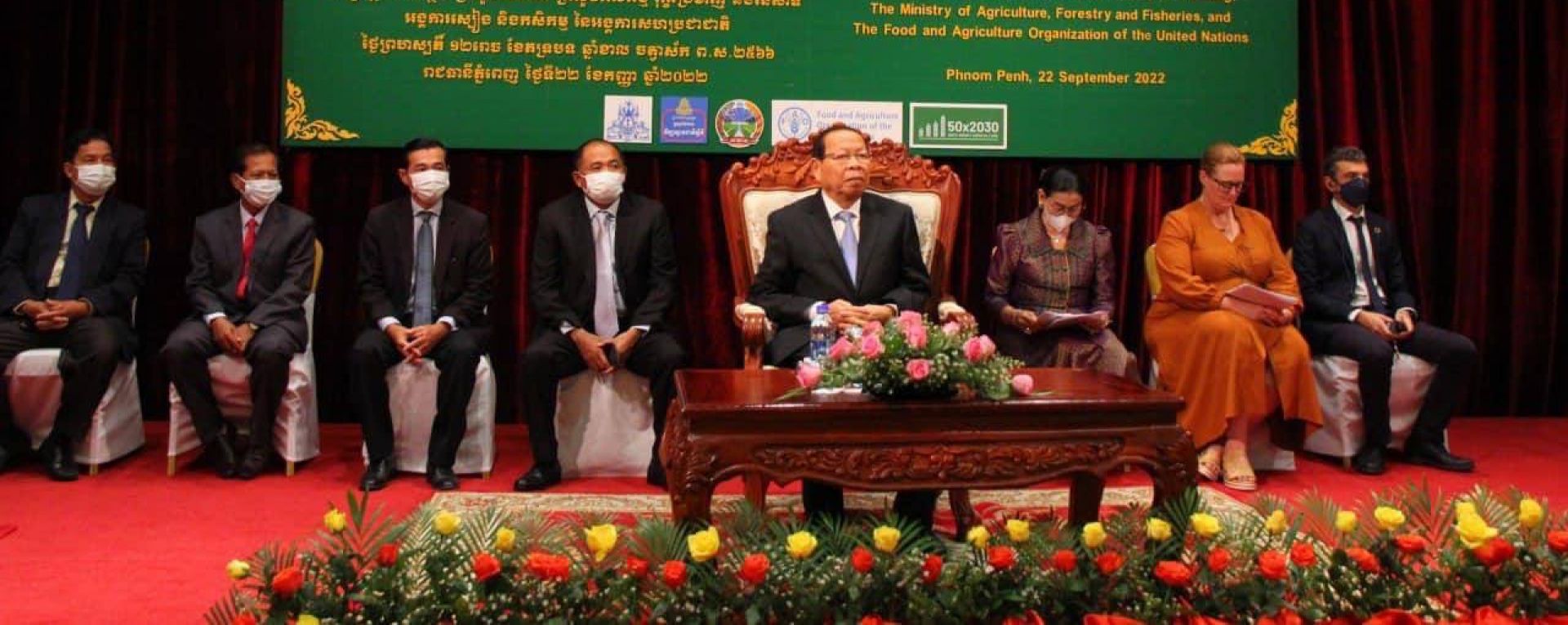CAMBODIA ISSUES 2020 AGRICULTURE SURVEY REPORT
The RGC collected information between December 2020 and January 2021 on the state of the agriculture sector specifically on crop cultivation, livestock and poultry raising, aquaculture and capture fishing, including on Food Insecurity Experience Scale and COVID-19 impact on agriculture, among others. The survey covers approximately 15,000 household and non-household agricultural holdings in the country, shedding light on the agriculture situation in the country at the height of the pandemic.
Key findings in the survey:
- Fifty-seven percent of total households in Cambodia are engaged in agricultural production. Of the households engaged in agriculture, 94 percent are cultivating crops (mainly non-aromatic paddy rice, mango, banana, and coconut); 82 percent are keeping or raising livestock, poultry, or insects; and around 27 percent are involved in capture fishing.
- There’s a significant increase in the number of households involved in these agricultural activities in CAS 2020 compared to the previous CIAS 2019.
- Agriculture is still an important source of livelihood in Cambodia with an estimated 31 percent of agricultural households drawing between 40 and 59 percent of their income from agriculture; and a further 16 percent reporting that almost 60 to 99 percent of their total household income was accounted for by agricultural income.
- Another important finding in the survey, related to the Food Insecurity Experience Scale (FIES), was the reported 24.7 percent of agricultural households that experienced moderate or severe food insecurity which was even higher in female-led households (28.7 percent) than in male-led households (23.1 percent). Such findings highlight the impact of COVID-19 in the country’s food security.
- Cambodia’s agricultural labour productivity (SDG Indicator 2.3.1) which is a measure of the agricultural volume of production per labour input (calculated using Purchasing Power Parity or PPP) stands at 11.85 PPP per labour day in 2020 dollars (9.72 PPP at constant 2011 international dollars).
Results of the CAS 2020 are important information that would help the RGC to address the lingering effects of the pandemic and the new challenges brought about by rising food prices and fuel. The 50x2030 Initiative is working hand in hand with the MAFF and NIS to ensure there is regular flow of foundational agricultural data on the state of Cambodia’s agriculture which is necessary to inform the country’s policies, plans and investments.
Visit the Cambodia National Institute of Statistics website for more information on the results of the CAS 2020 and the Statistical Release.
Related information is found on the FAO Cambodia website.
